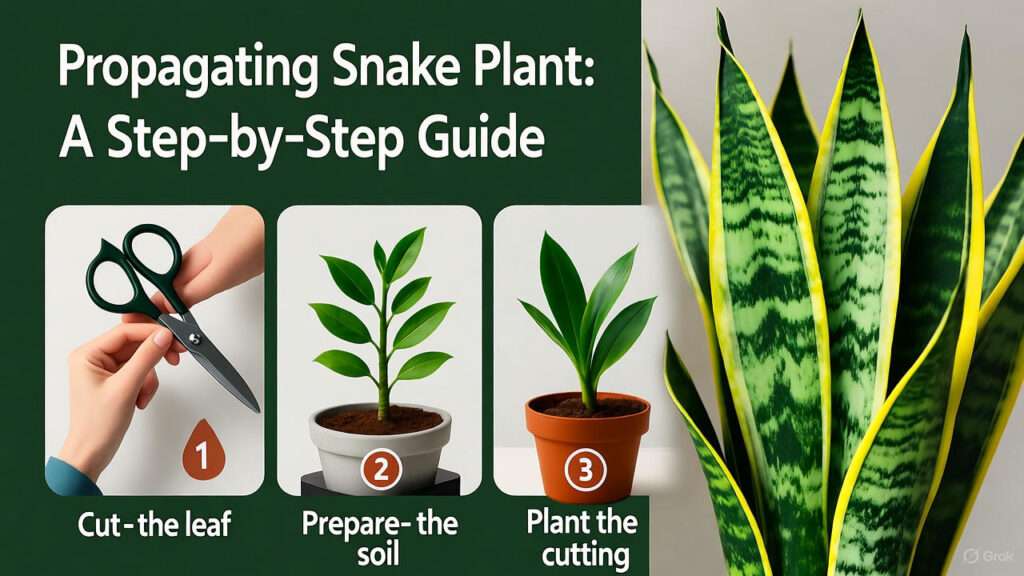Imagine transforming a single snake plant into a thriving collection of lush, air-purifying greenery—without spending a dime! Propagating snake plants is not only a rewarding hobby but also a sustainable way to expand your indoor jungle. Whether you’re a seasoned plant parent or a beginner, this comprehensive guide will walk you through every step of propagating snake plants with expert precision. As a horticulturist with over a decade of experience in indoor plant care, I’ve successfully propagated countless snake plants and helped others do the same. This article offers foolproof methods, insider tips, and troubleshooting advice to ensure your propagation journey is a success. Ready to multiply your greenery? Let’s dive in! 🌿
Understanding Snake Plants and Why They’re Perfect for Propagation 🐍
What Makes Snake Plants Unique?
Snake plants, scientifically known as Sansevieria (now often classified under Dracaena), are beloved for their striking, sword-like leaves and incredible resilience. These hardy houseplants thrive in a range of conditions, from low light to bright, indirect sunlight, making them a favorite for both novice and experienced gardeners. Varieties like Sansevieria Laurentii (with its yellow-edged leaves) and Sansevieria Cylindrica (with tubular foliage) add unique textures to any space. Their air-purifying qualities, as noted by NASA’s Clean Air Study, make them a functional and aesthetic addition to homes.
What makes snake plants ideal for propagation? Their slow growth and tough structure allow cuttings and divisions to establish roots with minimal fuss. Whether you’re working with a single leaf or dividing an entire plant, snake plants are forgiving and adaptable, ensuring high success rates for propagation.
Benefits of Propagating Snake Plants
Propagating snake plants offers a host of benefits:
- Cost Savings: Why buy new plants when you can create them for free? Propagation lets you expand your collection without breaking the bank.
- Gifting Potential: Share your propagated plants with friends, family, or neighbors as thoughtful, eco-friendly gifts.
- Sustainability: Propagation reduces the need for commercially grown plants, supporting a greener lifestyle.
- Personal Satisfaction: Watching a cutting or pup grow into a full-fledged plant is incredibly rewarding and boosts your confidence as a plant parent.
When and Why to Propagate Your Snake Plant 🌞
Best Time to Propagate
Timing is key for successful propagation. Spring and summer are the best seasons, as warmer temperatures and longer daylight hours promote faster root growth. Look for signs that your snake plant is ready for propagation: overcrowded pots, healthy and mature leaves, or the appearance of pups (small offshoots). Propagating during the plant’s active growth phase ensures quicker results and healthier new plants.
Common Reasons to Propagate
There are several reasons to propagate your snake plant:
- Rejuvenate Overgrown Plants: If your snake plant is root-bound or leggy, propagation can refresh its growth.
- Expand Your Collection: Create new plants to fill your home or office with greenery.
- Rescue Struggling Plants: If part of your plant is unhealthy, propagating healthy sections can save it.
- Share the Love: Propagated snake plants make excellent gifts for plant enthusiasts.
Tools and Materials You’ll Need for Propagation 🛠️
Before you start, gather these essentials:
- Sharp Scissors or Pruning Shears: For clean cuts to prevent damage or disease.
- Small Pots with Drainage Holes: Terracotta or plastic pots work well.
- Well-Draining Soil: A cactus or succulent mix is ideal.
- Rooting Hormone (Optional): Encourages faster root growth.
- Clean Jar or Vase: For water propagation.
- Spray Bottle: For misting soil or cuttings.
- Labels and Marker: To track different cuttings or varieties.
Expert Tip: Sterilize your tools with rubbing alcohol to prevent bacterial or fungal infections. For budget-conscious gardeners, repurpose clean yogurt containers or mason jars for propagation—just ensure proper drainage for soil-based methods. 🌱
Step-by-Step Guide to Propagating Snake Plants 🌿
Propagating snake plants can be done through three main methods: leaf cuttings in soil, leaf cuttings in water, and division of pups or rhizomes. Each method is beginner-friendly and yields great results when done correctly.
Method 1: Leaf Cuttings in Soil
This is the most common method for propagating snake plants, offering reliable results with minimal maintenance.
- Select a Healthy Leaf: Choose a mature, healthy leaf from your snake plant. Avoid leaves with brown spots or damage.
- Cut into Sections: Using sterilized scissors, cut the leaf into 3-4 inch sections. Mark or note the bottom end of each cutting (the part closest to the root), as this is critical for successful rooting.
- Allow Cuttings to Callous: Place the cuttings in a dry, shaded area for 1-2 days to let the cut ends form a callous. This prevents rot when planted.
- Plant in Soil: Insert the bottom end of each cutting into a pot filled with well-draining soil, burying about 1 inch deep. Space cuttings 1-2 inches apart.
- Water Sparingly: Lightly water the soil to keep it slightly moist but not soggy. Overwatering is the top cause of failure.
- Provide Indirect Light: Place the pot in bright, indirect light. Avoid direct sunlight, which can scorch the cuttings.
- Monitor Growth: Roots typically form in 2-4 weeks, with new shoots appearing in 6-8 weeks.
Expert Insight: Planting cuttings upright (with the bottom end down) ensures roots develop properly. Flipping the cutting upside down may prevent rooting, so always mark the base during cutting.
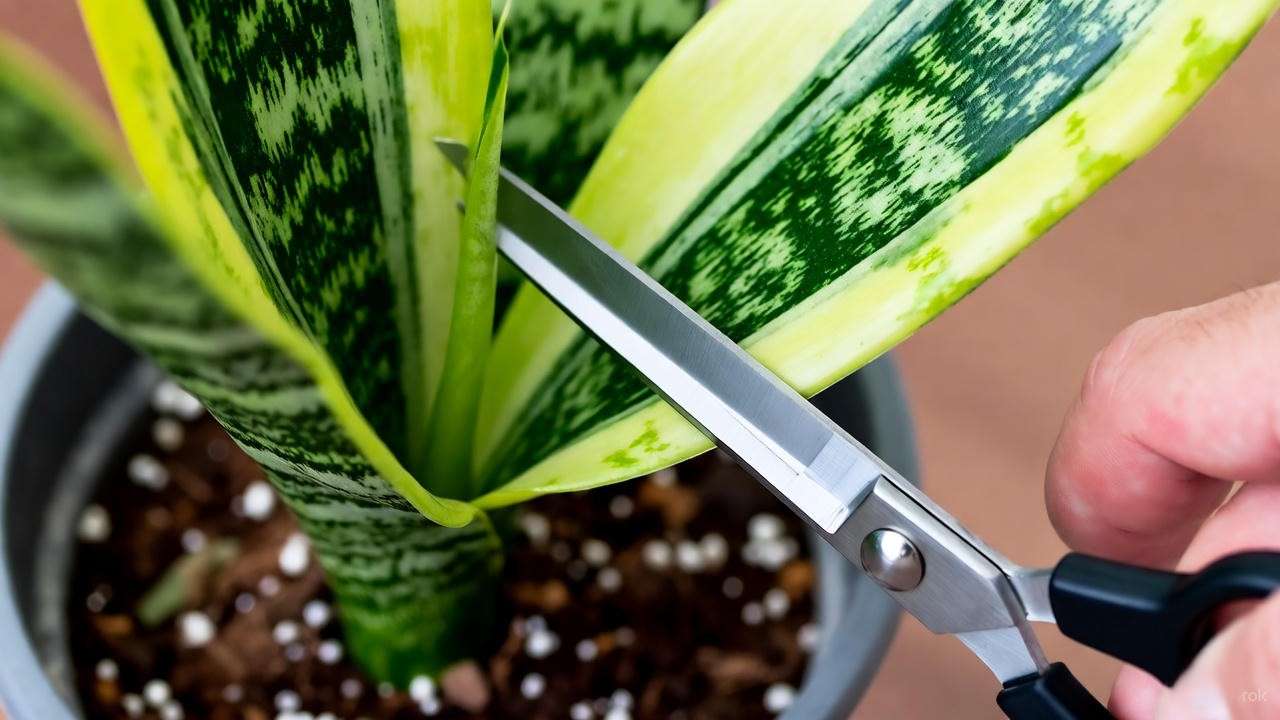
Method 2: Leaf Cuttings in Water
Water propagation is a visually appealing method, allowing you to watch roots grow in real time.
- Cut a Healthy Leaf: As with soil propagation, select a healthy leaf and cut it into 3-4 inch sections, noting the bottom end.
- Place in Water: Submerge the bottom 1 inch of each cutting in a clean jar of water. Ensure no leaves are fully submerged to avoid rot.
- Change Water Regularly: Replace the water every 5-7 days to prevent bacterial growth. Use filtered or distilled water for best results.
- Wait for Roots: Roots typically appear in 2-4 weeks. Wait until roots are at least 1-2 inches long before transferring to soil.
- Transfer to Soil: Plant rooted cuttings in a pot with well-draining soil, following the same care as soil-based cuttings.
Tip: Place the jar in a warm, brightly lit area, but avoid direct sunlight to prevent algae growth in the water. 🌊
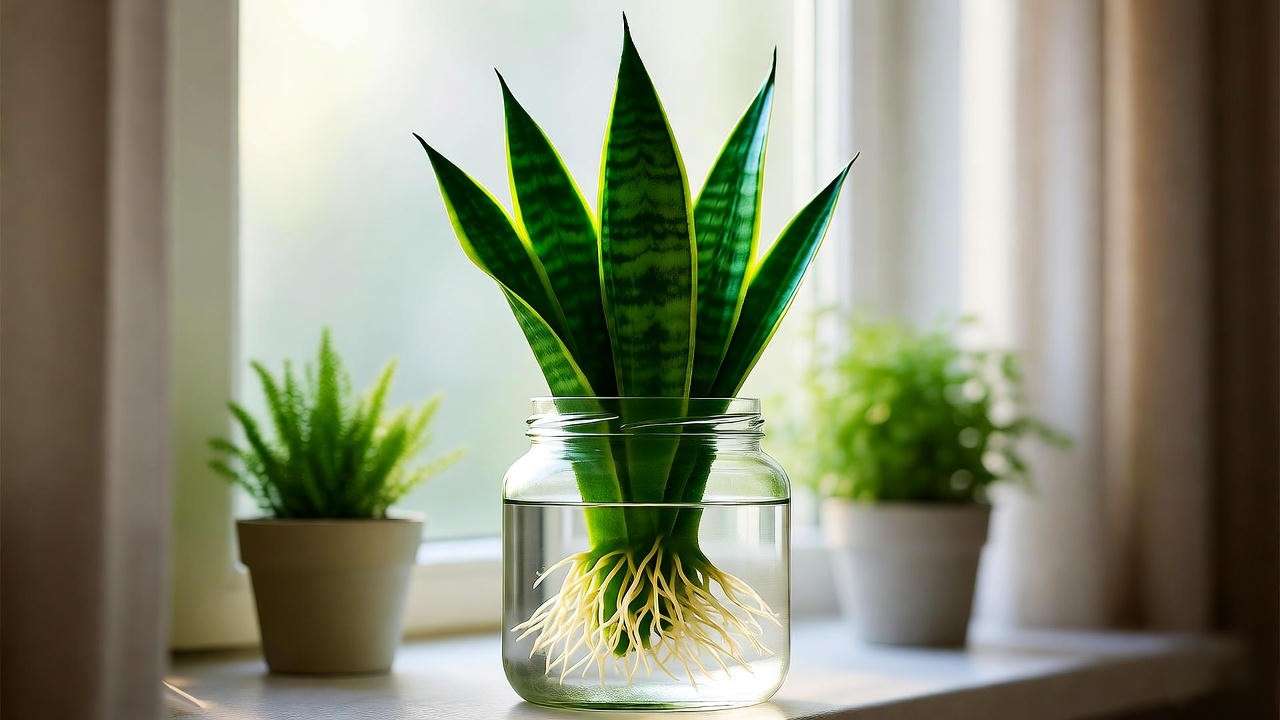
Method 3: Division of Pups or Rhizomes
Division is the fastest way to propagate snake plants, as pups already have roots and can grow independently.
- Remove the Plant from Its Pot: Gently lift the snake plant from its pot, shaking off excess soil to expose the roots and rhizomes.
- Identify Pups or Rhizomes: Look for small offshoots (pups) with their own roots or thick rhizomes connecting the plant.
- Separate with Care: Use a sterilized knife to cut pups or rhizomes from the parent plant, ensuring each division has roots attached.
- Repot Divisions: Plant each pup or rhizome in its own pot with fresh, well-draining soil. Water lightly to settle the soil.
- Care for New Plants: Place in bright, indirect light and follow standard snake plant care.
Example: I once divided an overcrowded Sansevieria Laurentii that had three pups growing tightly together. After separating them, each pup grew into a robust plant within months, proving division is a quick and effective method! 🌱
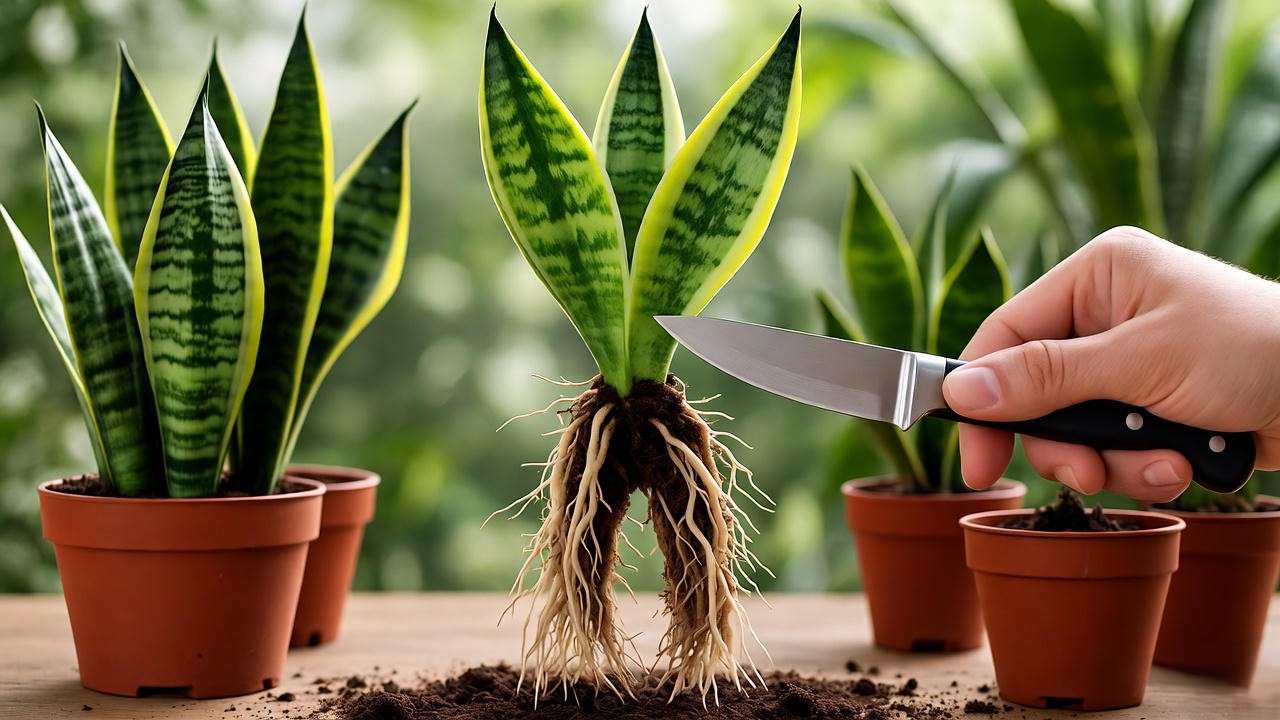
Caring for Your Newly Propagated Snake Plants 🌱
Watering and Light Requirements
Newly propagated snake plants need careful attention to thrive:
- Watering: Water sparingly, allowing the soil to dry out completely between waterings. Overwatering is the leading cause of root rot in snake plants.
- Light: Place in bright, indirect light for optimal growth. Snake plants tolerate low light, but growth will be slower. Avoid direct sunlight, which can burn delicate new growth.
Common Mistake: Many beginners overwater propagated plants, thinking more water equals faster growth. Stick to a “less is more” approach for healthy roots.
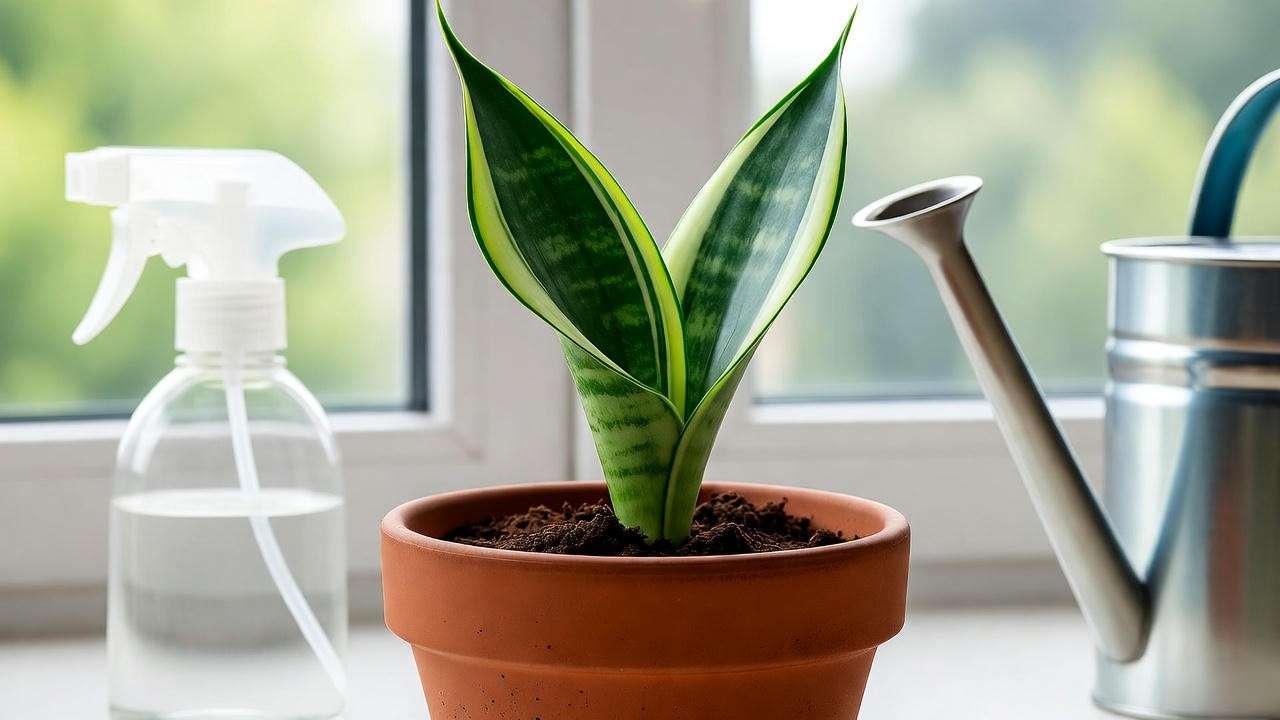
Soil and Potting Tips
- Soil: Use a cactus or succulent potting mix, or create your own by mixing potting soil with perlite or sand for extra drainage.
- Pots: Choose pots with drainage holes to prevent water buildup. Terracotta pots are excellent for wicking away excess moisture.
- Expert Tip: Add a layer of pebbles or gravel to the soil surface to improve drainage and enhance aesthetics. 🪴
Monitoring Growth and Transplanting
Expect roots to develop in 2-8 weeks, depending on the method and conditions. New shoots may take 6-12 weeks to appear. Check for success by gently tugging on cuttings—if there’s resistance, roots are forming! Once rooted cuttings or pups show new growth, transplant them to larger pots if needed. Ensure the new pot is only 1-2 inches larger in diameter to avoid overwatering risks.
Troubleshooting Common Propagation Problems 🐞
Why Aren’t My Cuttings Rooting?
If your cuttings aren’t rooting, consider these causes:
- Overwatering: Soggy soil prevents root formation. Let the soil dry out and reduce watering frequency.
- Insufficient Light: Move cuttings to a brighter spot with indirect light.
- Unhealthy Leaves: Ensure you start with firm, healthy leaves free of damage.
Solution: Trim any mushy or discolored sections, let cuttings callous again, and replant in fresh, dry soil.
Dealing with Rot or Yellowing Leaves
Rot is a common issue, especially in water propagation or overwatered soil.
- Signs of Rot: Soft, mushy bases or yellowing leaves.
- Fix It: Remove affected sections, let healthy parts callous, and start over with better drainage or fresher water.
- Prevention: Use sterilized tools, well-draining soil, and avoid overwatering.
Slow Growth or No New Shoots
If growth is sluggish, check for:
- Cold Temperatures: Snake plants prefer 65-85°F (18-29°C). Move to a warmer spot if needed.
- Low Light: Increase light exposure, but keep it indirect.
- Patience: Snake plants are slow growers, so give them time—new shoots can take months.
Expert Tips for Propagation Success 🌟
- Use Rooting Hormone: Dip leaf cuttings in rooting hormone powder to speed up root development (optional but effective).
- Label Your Cuttings: Track varieties or methods by labeling pots or jars, especially if propagating multiple plants.
- Propagate in Batches: Plant several cuttings at once to increase your chances of success.
- Preserving Variegation: For variegated snake plants like Laurentii, use division instead of leaf cuttings, as cuttings may revert to solid green.
Bonus Insight: In my experience, propagating in spring yields the fastest results, as the plant’s natural growth cycle is in full swing. 🌸
Creative Ways to Use Propagated Snake Plants 🎍
Once you’ve successfully propagated your snake plants, the fun doesn’t stop! These versatile, low-maintenance plants can enhance your home, make thoughtful gifts, or even contribute to a greener lifestyle. Here are some creative ways to make the most of your newly propagated snake plants:
- Styling Your Space: Group snake plants of varying heights and varieties in decorative pots for a modern, cohesive look. Place them on a windowsill, bookshelf, or as a centerpiece on a dining table. Their upright leaves add architectural flair to any room. For a minimalist aesthetic, use sleek ceramic pots in neutral tones like white, black, or terracotta. 🪴
- Gifting with Love: Propagated snake plants make heartfelt, eco-friendly gifts. Pot a healthy pup or rooted cutting in a cute container, add a ribbon, and include a care card with basic tips (e.g., “Water sparingly, place in indirect light”). These make perfect housewarming or birthday presents for plant lovers.
- Maximizing Air Purification: Snake plants are renowned for their air-purifying qualities, removing toxins like formaldehyde and benzene, as noted in NASA’s Clean Air Study. Place propagated plants in bedrooms, offices, or living rooms to improve air quality while adding greenery. Cluster multiple plants for a stronger effect. 🌬️
- Creating a Plant Wall: Use your propagated snake plants to build a vertical garden or plant wall. Mount small pots on a wall grid or shelf to create a living art piece. This works especially well with compact varieties like Sansevieria Hahnii.
- Office or Workspace Decor: Small propagated snake plants are perfect for desks or office spaces, thriving in low light and requiring minimal care. They add a touch of nature to boost productivity and reduce stress.
Example: One of my clients transformed their small apartment balcony into a green oasis by propagating a single Sansevieria Laurentii into ten new plants. They arranged the plants in a mix of colorful pots, creating a vibrant, low-maintenance display that earned compliments from every visitor! 🌟
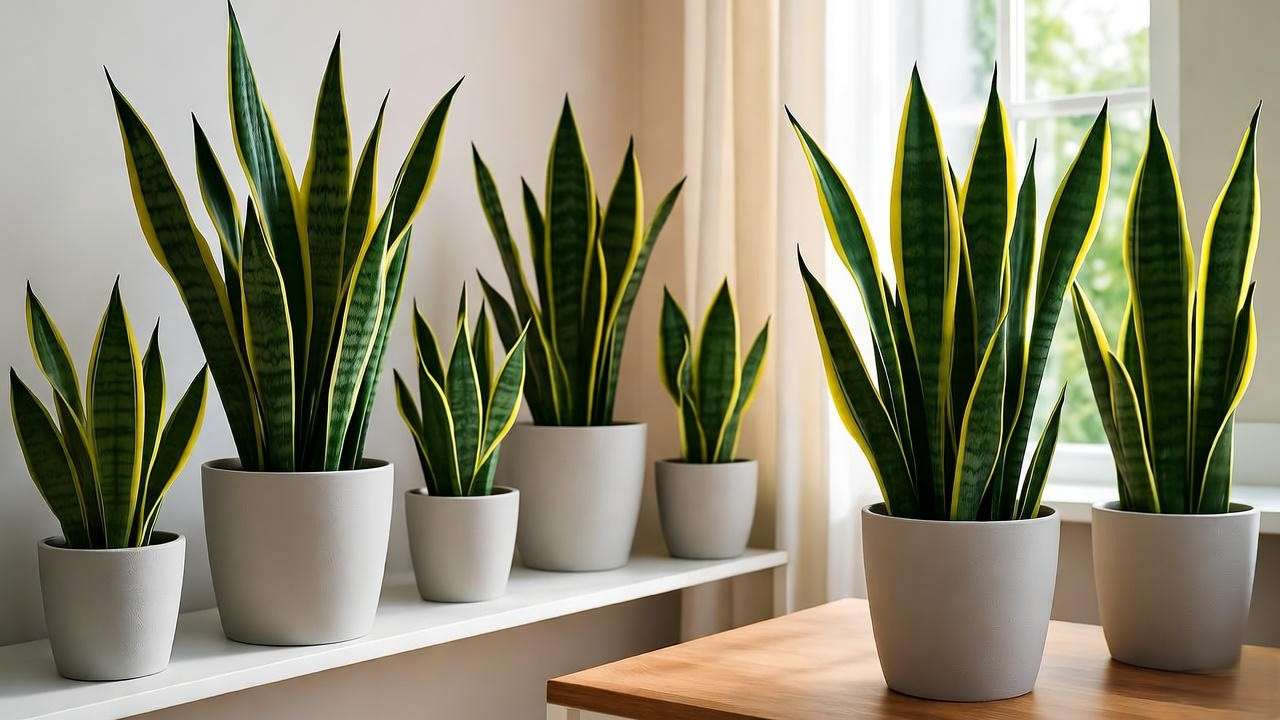
Frequently Asked Questions (FAQs) ❓
To address common concerns and ensure your propagation success, here are answers to the most frequently asked questions about propagating snake plants:
- Can you propagate a snake plant from a single leaf?
Absolutely! A single healthy leaf can be cut into sections and propagated in soil or water, as outlined in the step-by-step guide above. Ensure the bottom end of the cutting is planted or submerged correctly to encourage root growth. - How long does it take for snake plant cuttings to root?
Rooting typically takes 2-8 weeks, depending on the method (water propagation is often faster) and environmental conditions like temperature and light. New shoots may take an additional 4-12 weeks to appear. Patience is key! - Do snake plants need special soil for propagation?
Yes, well-draining soil is essential to prevent rot. A cactus or succulent mix works best, or you can mix potting soil with perlite or sand (1:1 ratio). Ensure the pot has drainage holes to avoid water buildup. - Why are my propagated snake plants not growing?
Slow growth can result from overwatering, insufficient light, or cold temperatures. Check your care routine: water only when the soil is dry, provide bright indirect light, and keep the plant in a warm spot (65-85°F). If issues persist, inspect for root rot or unhealthy cuttings. - Can I propagate a variegated snake plant?
Yes, but leaf cuttings from variegated varieties like Sansevieria Laurentii may produce solid green plants, as variegation is often lost. For best results, use the division method to propagate pups, which retain the parent plant’s variegated patterns.
Expert Tip: For FAQs, I often recommend readers keep a propagation journal to track light, watering, and growth progress. This helps identify what works best for your specific environment and builds confidence over time. 📝
Conclusion: Start Propagating Your Snake Plants Today! 🚀
Propagating snake plants is a simple, rewarding way to multiply your greenery, save money, and share the joy of plant care with others. With three easy methods—leaf cuttings in soil, water propagation, and division—you can turn one plant into many, no matter your skill level. This guide, backed by years of horticultural experience, provides everything you need to succeed: step-by-step instructions, troubleshooting advice, and creative ideas to make the most of your new plants. 🌱
Ready to get started? Grab your scissors, pick a healthy snake plant, and try one of the propagation methods today. Share your propagation journey in the comments below or tag us on social media—we’d love to see your thriving snake plant family! For more plant care tips, check out our related articles on low-maintenance houseplants, succulent care, or creating a sustainable indoor garden. Happy propagating! 🌿

